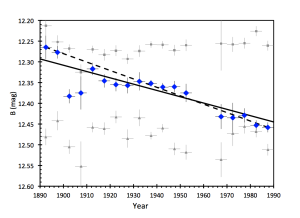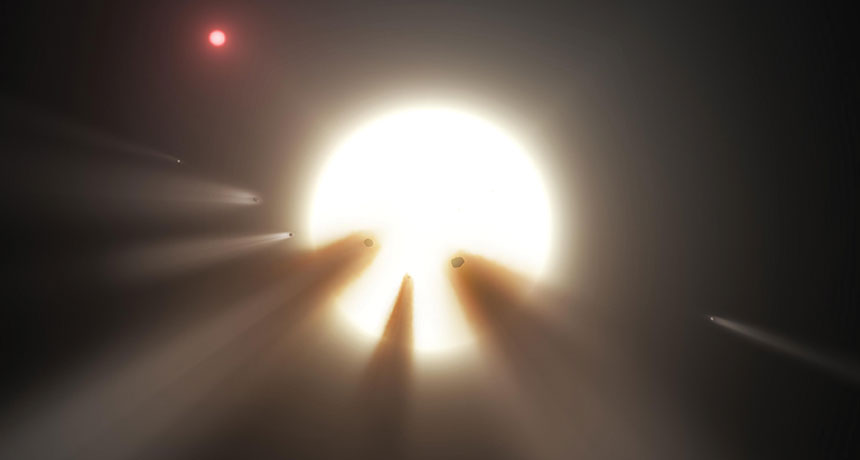Back in October I wrote about the mysterious star recently discovered by those good people running the Keppler space telescope. The star, informally called Tabby’s Star after Yale astronomer Tabetha Boyajian who discovered it, is of interest because its apparent brightness seems to very suddenly and very significantly dim every couple of years. We’re very used to seeing the brightness of stars change, that was what Keppler was designed to do as a way of finding exoplanets; and very successful it was too.
This star does it on a scale neverbefore seen that scientists are struggling to explain using currently understood mechanisms, however, prompting some to speculate that something unnatural could be at work. One of the more outlandish propositions is a Dyson Swarm type affair being built by a highly advanced alien civilisation to harvest the energy of the star.
Some of the more mundane explanations are perhaps that there’s a load of dust in the way or maybe there are loads of comets in the system getting in the way. There are significant problems with all theories thusfar suggested. If it were dust in the way then that dust would be warmed by the light it absorbs, this would leave a very obvious infrared signature that simply isn’t there. This also rules out the alien civilisation option. Even if such a tehcnology existed the heat has to go somewhere, it isn’t exempt from the laws of physics and a goodly amount of infrared signal would be produced if you were to harvets 20% of a star’s output.
Comets don’t work either. It has been calculated that it would take 648,000 giant comets to be able to block out as much as a fifth of the star’s light; and they’d all have to pass in front of the star at the same time. What are the chances?

The story is further complicated by a chance discovery in the archives of Harvard. Tabby’s Star, official designation KIC8462852, has actually been a part of regular star surveys going back about 150 years. That means we have regular pictures and data going back a long way, in human terms, to help us get a better perspective. The problem is that this new data throws up yet another problem that we can’t explain. Tabby has been progressively dimming all this time and has lost about 20% of its luminosity over that time. There is no known mechanism that can explain such a dramatic loss of light over such a short period.
This phenomenon was so unheard of that other teams have gone back over the Harvard archive to reanalyse the data. Some have concluded that the explanation is simply a data artefact caused by poor calibration over long term storage.
Even if we leave out the long term dimming as an anomaly, we still have no real idea how the very real short term dimming-brightening happens. Normally if an entire planet passes in front of its parent star the light might be diminished by a couple of percent or so. 20% is just completely beyond anything we yet know about.
This is one of the great things about this particular star: we just don’t know. It’s a genuine mystery. There’s every probability it’ll turn out to be an unusual example of something pretty ordinary, but right now it is one of the hottest stories in astronomy and I, for one, am tantalised.

Why do we assume that a Type II or III Civilization would still rely on radio signals for communication? It doesn’t seem logical.
It also seems more likely that if aliens possess the ability to construct some kind Dyson apparatus, they’d also have solved the problem of detectable infrared energy bleed. My guess is that, before they would undertake a project like this, they would already have addressed energy inefficiency.
LikeLike
before they undertake a project like this? this would be a project that would be uber long-term…like tens of thousands of years to get it to that point…and I’m guessing that solar power remained the most energy efficient and long term viable option and what not and some such etc etc
LikeLiked by 1 person
[…] in February I wrote an update to the fascinating story of Tabby’s Star. Tabby’s Star is the […]
LikeLike